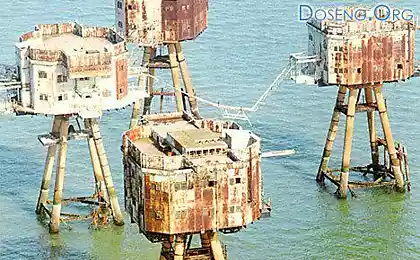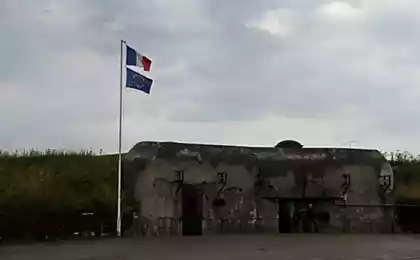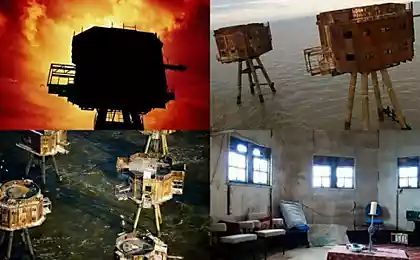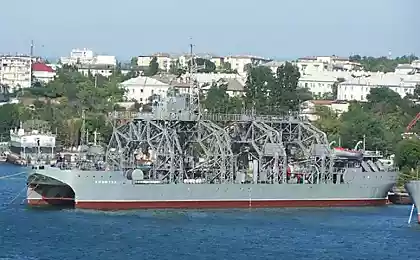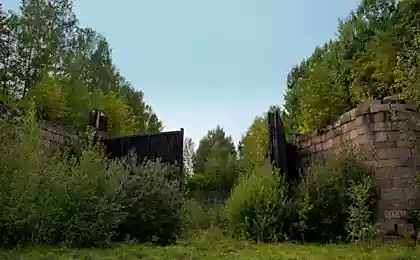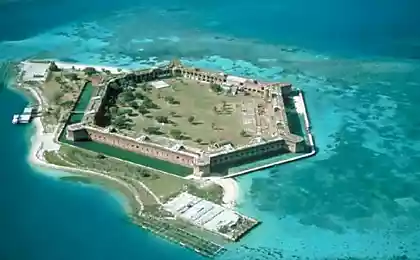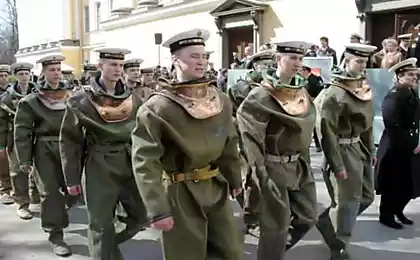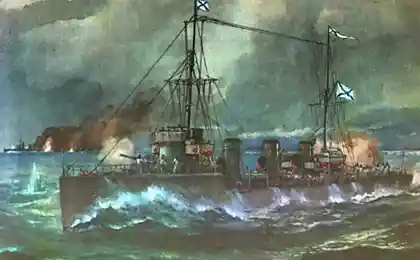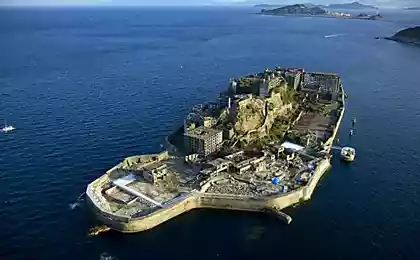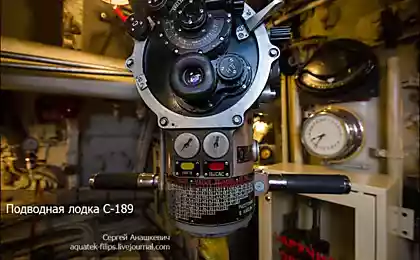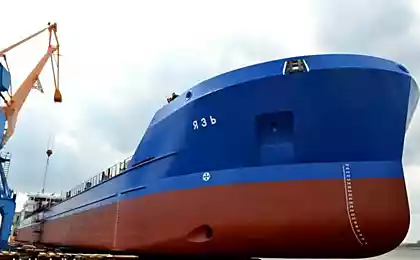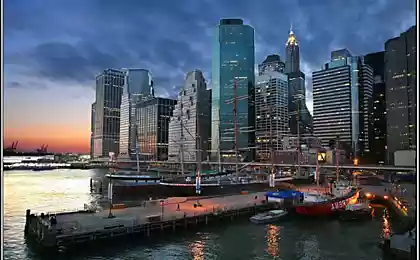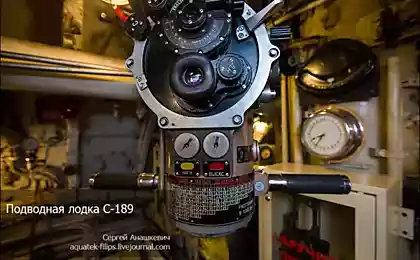1568
Kronstadt
Increasingly, the vast Chips threads began to appear about the weapon.
also I do not stay in debt.
The attention of many texts and pictures !!! Forts of St. Petersburg - a set of long-term fortifications, erected at different times in order to protect the capital of the state from attack by sea. In the years of its existence, they were a monument of fortification art of world importance. In terms of military history, and world history as a whole range of considered fortifications unique in that it is the still lingering objects can track the progress of all accelerating competition between the means of attack from the sea and the protection of it, between the development of fortification and progress in the establishment of artillery systems both for the purpose of defense, or overcoming it. This competition lasted for over two hundred years, during which the defense of St. Petersburg has never been broken.
Immediately after the founding of St. Petersburg for the protection being built there a fortress on the banks of Vasilyevsky Island was installed an artillery battery at the beginning of the XX century defensive capabilities fortress fell markedly and for the protection of the capital close to the exit of the Gulf of Finland in the narrowest part (width of 21 km) was set up a unique mine-artillery positions, based on the land forts on the southern and northern shores and its banks are mine. That to secure these forts were built special railway lines.
Let's start
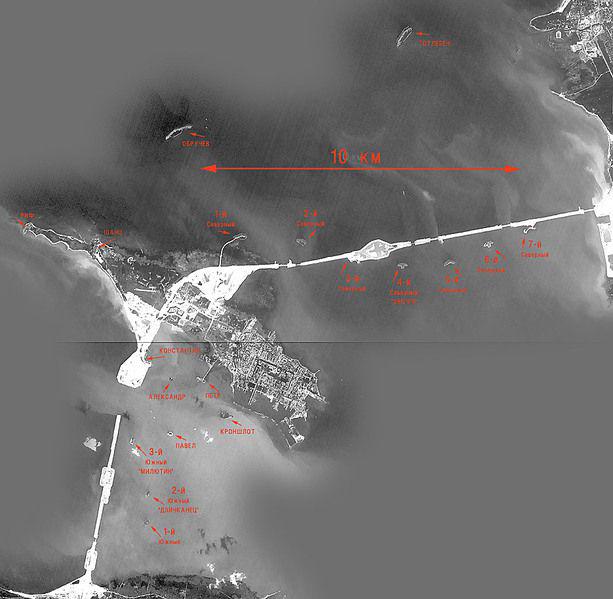
Fort "Kronshlot»
Built in 1703-1704, the years 1715-1724
What is interesting: It is assumed that he has made drawings of Peter Voronezh model
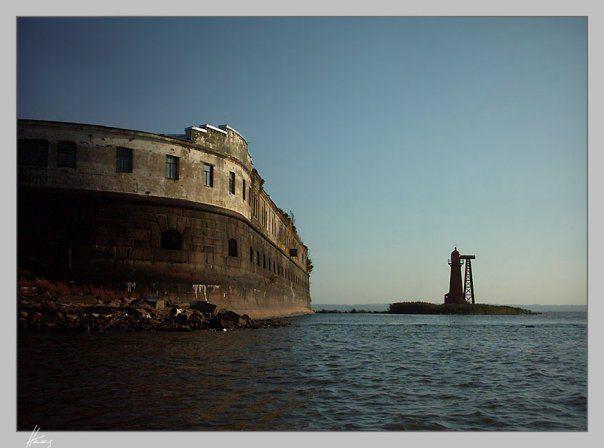
Fort "Emperor Peter I» («Citadel»)
Built in 1721-1724 years
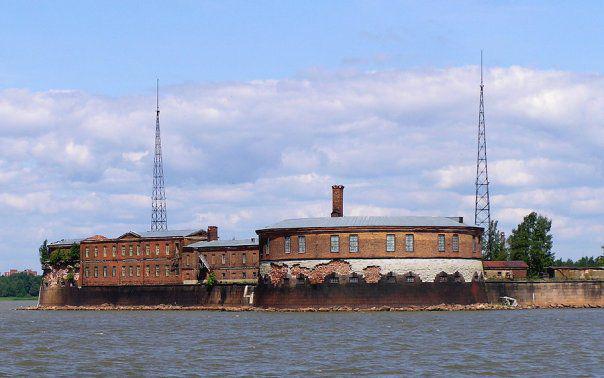
Fort "Emperor Paul I» («Risbank»)
Built in the years 1807-1812, rebuilt in the years 1845-1859
What's interesting: In the years of its existence, it was the largest and most impressive sea fort is the key to the Big Kronstadt raid
At the end of the XIX century and later, the fort was used to store naval mines and torpedoes.
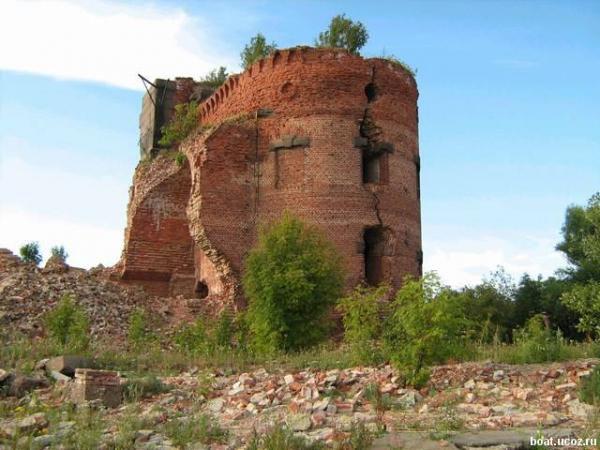
Fort "Emperor Alexander I» («The Plague»)
Built in 1836-1845 years
What's interesting: In 1898, on the basis of the Imperial Institute of Experimental Medicine was established "Special Committee for the prevention of entry of plague infection and to combat it in the event of Her appearance in Russia" (KOMOCHUM). At the end of the XIX century. Russia's outbreak of bubonic plague. Lone fort was the most suitable place to host special laboratory (station) for the production of vaccines using the horse as a working material. The fort was equipped with steam heating stables, an elevator to lift the animals and for their cremation oven. July 27, 1899 the solemn consecration of the station.
After that, the fort lodged several doctors, among whom were DK Zabolotny, MG Tartakovsky and others. During operation, the head of special laboratory VI Turchinov-Vilkevich (Vyzhnikevich?) And Dr. M. F. Schreiber infected and their bodies after death have also been burned in the incinerator. After that, even on the Elimination of laboratories for the fort remains unofficial title "The Plague fort."

Fort "Schanz»
Built in the 1700s, 1788 - reconstruction, rebuilt in 1855-1856, 1863, 1898-1913

2 Battery "Prince Menshikov»
Built 1841- 1850 years
What's interesting: the battery was on the orders of the Emperor's favorite, is named after Peter.
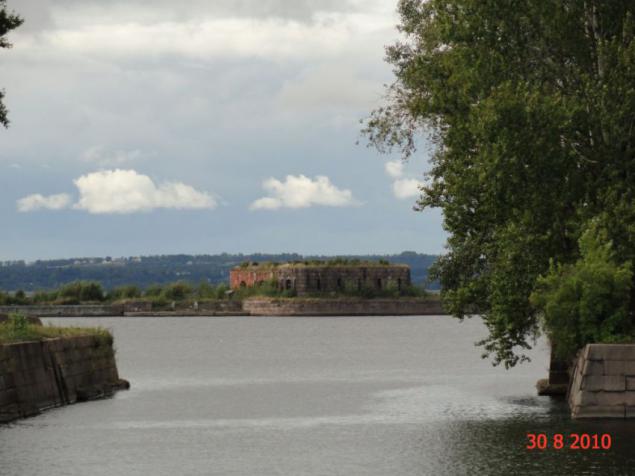
Fort "Constantine" (Dual southern Battery)
Built in the years 1868-1879, rebuilt in the years 1897-1901
What is interesting: During the lifetime of the fort played a role test site, which is being tested artillery equipment and new methods of fortification
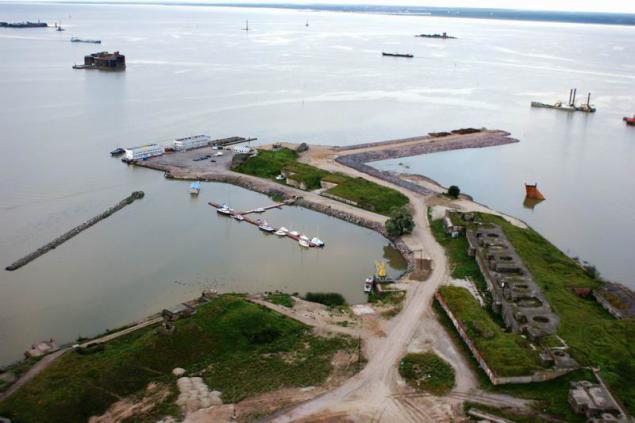
Fort 1 (South Battery 1)
Built in the years 1855-1856, rebuilt in the years 1865-1868

Fort 2 (South Battery 2 - "Dzichkanets»)
Built in the years 1855-1856, rebuilt in the years 1869-1873
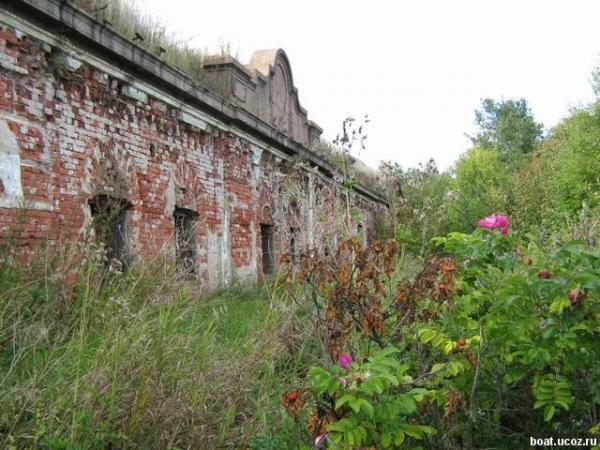
Fort 3 ("Count Milutin", "The tower»)
Built in the years 1855-1856, rebuilt in the years 1869-1879
What is interesting: On the fort, the first time in Russian fortification, guns were installed in the towers, although very imperfect by design.
It was at this time there is a transition from a smoothbore artillery rifled artillery, which greatly increased the range and led to a change of tactics battle.
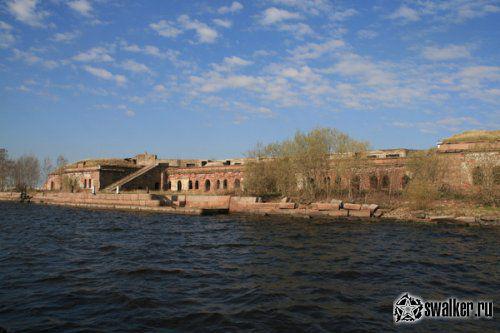
North Fort 1 (North 1 battery)
Built in the years 1855-1856, rebuilt in the years 1861-1869
What's interesting: Until 2002, the fort was used as a warehouse for ammunition and then abandoned.
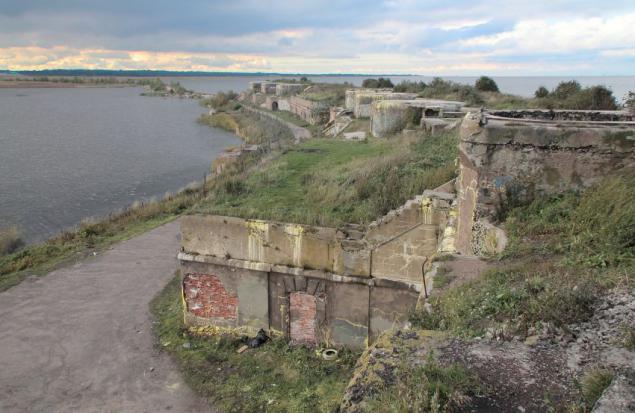
North Fort 2 (North 2 battery)
Built in the years 1855-1856, rebuilt in the years 1862-1867
What's interesting: While the fort is in a relatively preserved.

North Fort 3 (North Battery 3)
Built in the years 1855-1856, rebuilt in the years 1862-1867
What is interesting: During the construction of the dam was filled up with sand and used for its deposit. When a sample of sand bulldozed everything that remained was destroyed. Now through the former fort goes the road to Kronstadt.

North Fort 4 "The Beast" (North battery 4 "beast»)
Built in 1864-1869 years
What is interesting: It was the most interesting from an architectural point of view of the fort.
floors began to be covered with a solution of natural asphalt. It was the first successful use of this material in Russia, then began asphalting the streets of the capital
In 1970, its premises were used as a cesspool for waste oil and other petroleum products from ships coming to repair. For this reason and the lack of protection he repeatedly burned for several days
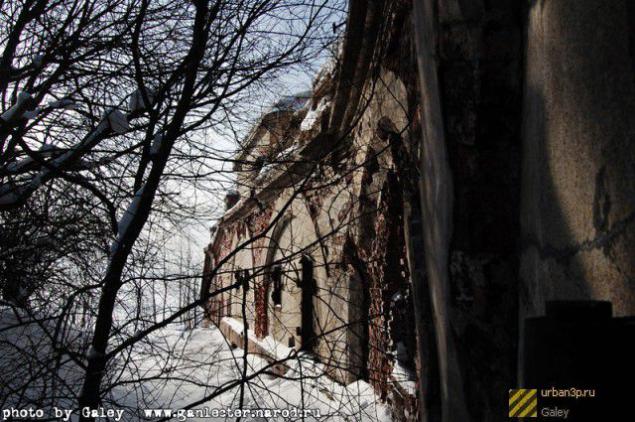
North Fort 5 (Northern Battery 5)
Built in the years 1855-1856, rebuilt in the years 1864-1869
What is interesting here in the 80s vocational students number 61 was an attempt to restore, but because of the lack of interest of the state, the initiative quickly stalled
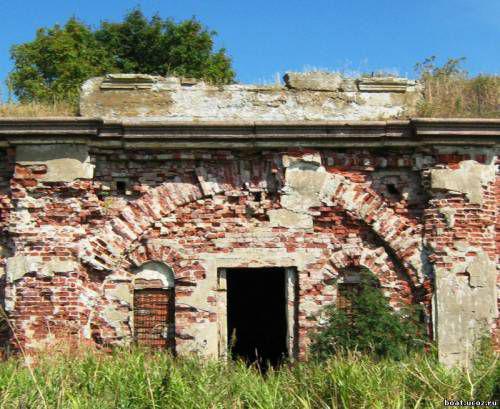
North Fort 6 (Northern Battery 6)
Built in the years 1855-1856, rebuilt in the years 1864-1869
What's interesting: Since 1962 and still at the fort are the service of the military department (now the Gidropribor), which excluding the former historical value of its buildings are built up from silica brick, completely distorting the architectural appearance of the buildings the middle of the XIX century.
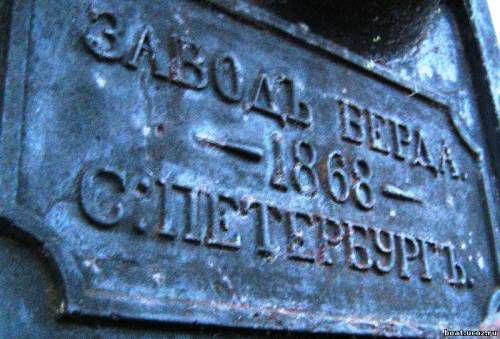
North Fort 7 (North battery 7)
Built in the years 1855-1856, rebuilt in the years 1857-1866
What is interesting: It - the only one of all sea forts, which became available on dry land thanks to its proximity to the dam. It is currently used as a wild uncomfortable beach, attracting car owners the relative purity of water. The remaining space is used as a makeshift public toilet. In 2009, given to private ownership. In 2011, at the fort has a bar, restaurant, car and motorcycle parking, the beach, parking for yachts. Admission is free for walking, car owners pay for parking. Externally, there are practically no facilities. Almost everything harvested by modern materials, or destroyed.
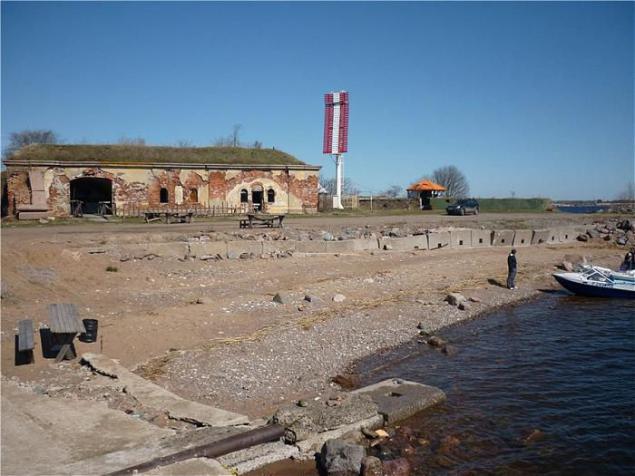
Fort "Totleben" ("Pervomaysk»)
Built in 1896-1913 years
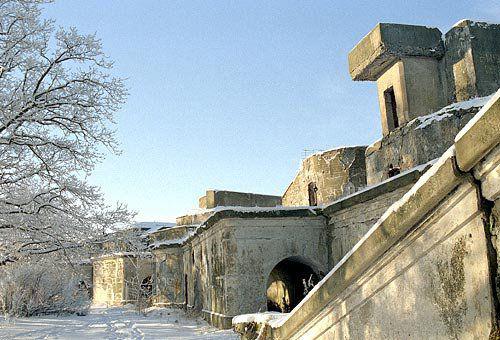
Fort "Obruchev" ("Red Army»)
Built in 1896-1913 years
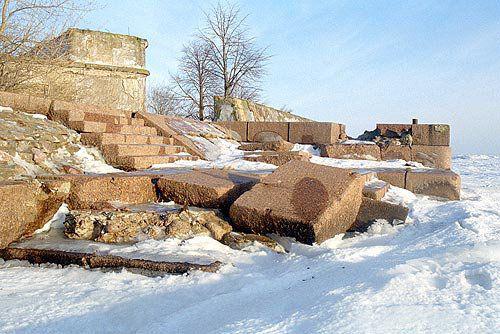
Fort "Reef" (former Alexander battery)
Built in 1898-1912 years
What is interesting: Here was built experimental towering dungeon for 57-mm guns of serfdom, which is raised and lowered by means of a system of levers under the action of recoil when firing ...
Now the fort - indoor facility in which, taking advantage of the lack of control on the part of the protection of cultural heritage is conducted renovation.
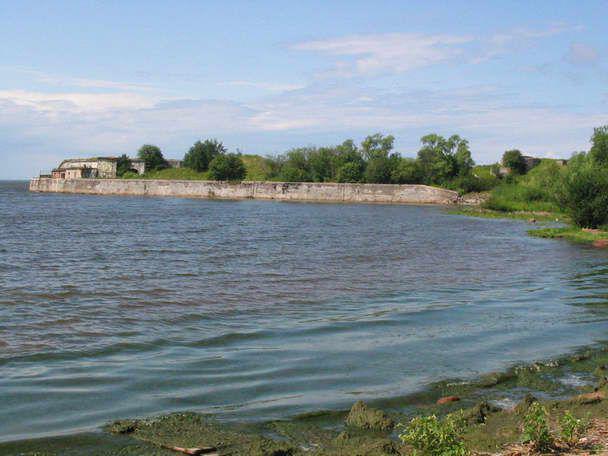
further braked slightly
Since These are the most interesting forts
Fort «Krasnaya Gorka»

Named for the village of Krasnaya Gorka (now - Krasnaya Gorka), next to which is.
Fort came into operation in early 1914. By the beginning of World War II, the fort was manned by a garrison of wartime (2000 artillery, infantry and 2000, more than 500 soldiers of other arms). In the fighting of World War fort did not participate
By January 1917, the garrison of the fort grew to 5,500 people. In 1918, due to the proximity of the German army fort was mined. The explosion had been canceled, but the charges were not removed. August 19 during a severe thunderstorm detonated several charges. Blown up the powder magazine three shells Kane and four 254-mm guns. Artillery servant died, the guns were heavily damaged, and one 254-mm gun destroyed.

October 30, 1919 entered into a fort artillery duel with the English monitor "Erebus" (eng. HMS Erebus), which fulfilled the timid and belated fire support to the British fleet Yudenich army offensive.
In 1921, the guns "Red Hill" fired on Kronstadt, suppressing anti-Bolshevik uprising
During the Great Patriotic War, the fort was the center of defense Oranienbaum bridgehead. The range of his guns actually determines the location of the range of the German positions. Around the fort were laid railroad tracks, which on special transporters move large caliber naval guns (356-, 305-, 180-mm).

After the war, the fort for some time maintained combat ready, then its premises were used as a warehouse, and then almost completely abandoned.
In 2007, together with the municipal authorities Lebiazhie, Lomonosov district of the Leningrad region and the Navy decided in the near future to create a museum on the site of the legendary fort.
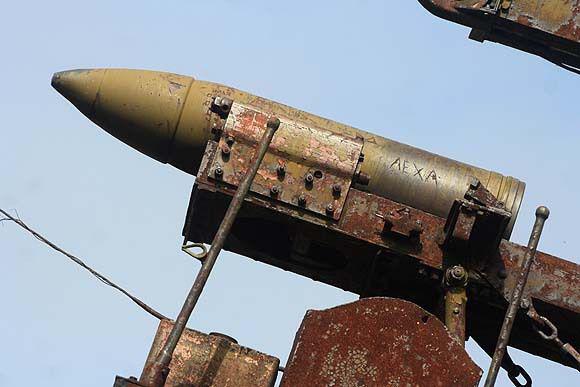
In 2007, together with the municipal authorities Lebiazhie, Lomonosov district of the Leningrad region and the Navy decided in the near future to create a museum on the site of the legendary fort.
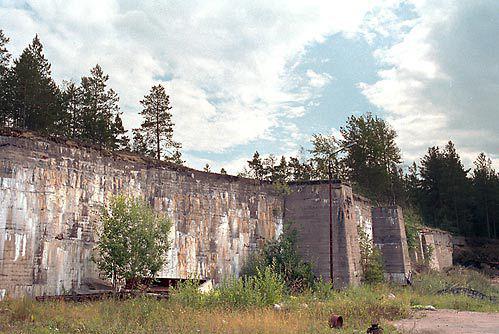
Fort «Eno»
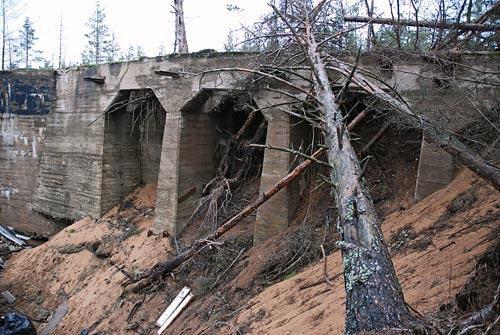
In 1909, the General Staff approved a plan under which 60 km west of St. Petersburg at the site of narrowing the Gulf - the Strait Stirsudden - create advanced mine-artillery positions. It became the core of two new coastal fort, each of which was able to successfully conduct an artillery duel with the battle fleet and prevent minesweeping.
The territory allotted fort housed a summer residence, it was Finland. Volunteer in your garden treasury transferred only Miliukov A. and artists Mate Vladimir Serov VA The first two were equipped under the premises of builders and Serov villa was demolished during the construction of the railroad to the fort.

The fort had two coastal batteries of four 152 mm cannon Kane (flanks), a battery of eight 254-mm guns and a battery of eight 279 mm howitzers, who shot 15-18 km. Around the guns was a whole underground town, covered with a two-meter layer of concrete, designed for getting large-caliber artillery shells ship. There have been snarjadnye cellar, barracks, the railway to deliver shells to the guns, command and observation posts. The positions were covered by a 3-meter concrete breastworks. The fort was surrounded by a small shaft with concrete reference points and adapted for all-round defense

In January-February 1918, when only began to form a workers 'and peasants' Red Army detachment of Red Guards Sestroretsk (hundred A. Panshin) with SP carried a wax guard to protect the fort Ino in Finland. The old army randomly demobilized, leaving the fort to fend for themselves. A group of Sestroretsk found the fort almost empty. Only a small part of the revolutionary sailors detained rout demoralized soldiers.
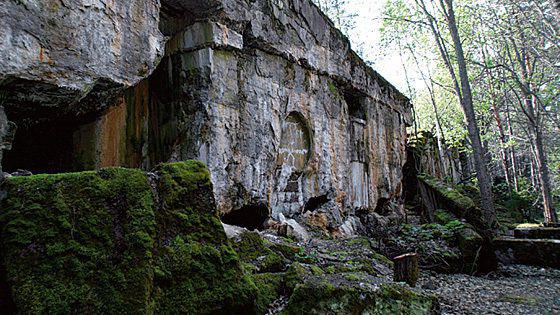
April 24 Finnish troops laid siege to the fort Ino. Pursuing the Finnish Red Guard, retreating to the Soviet border, Finns and Germans surrounded him and offered to start talks for an immediate surrender. But the besieged with strong arms, a large amount of ammunition and food, refused to surrender without orders from the Soviet government.
The officer of the royal army commandant of the fortress was trying to prove that the protection of the fort a detachment of 200 Red Army - a fool's errand. But it is not supported, except for the 6 alarmist. Worse was the case when the April evening, taking with him a plan for the fort commander ran to the Finns.
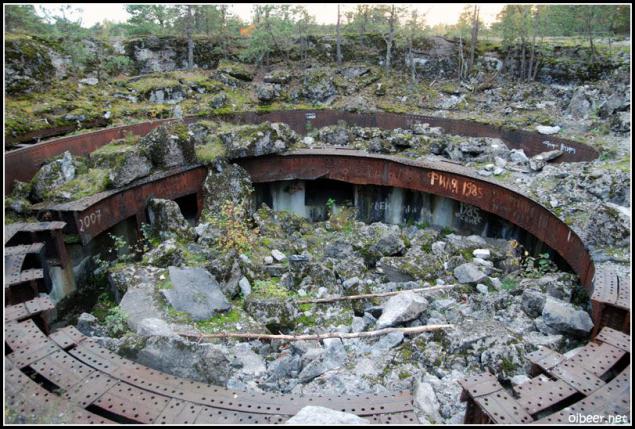
04.24.1918 years in the preparation of delivery fort locks with guns were removed and taken to Kronstadt, prepared for the explosion of the battery. Moscow fears that the protection of the fort can lead to rupture of the Brest peace.
05.05.1918, Germany required to pass the fort of Finland.
Squad held the defense so far from Kronstadt to the aid do not try an icebreaker and a warship with a government commission, offer to blow the fort in order not to leave the heavily fortified military base the enemy.
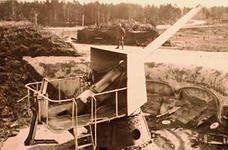
In the second half of May, the last days of the fort Ino. When the group left its shores, bright flames devoured the wooden buildings, kitchens, barracks. Being far from the coast the Red Army had heard several explosions. The fortifications of the fort got no enemies.
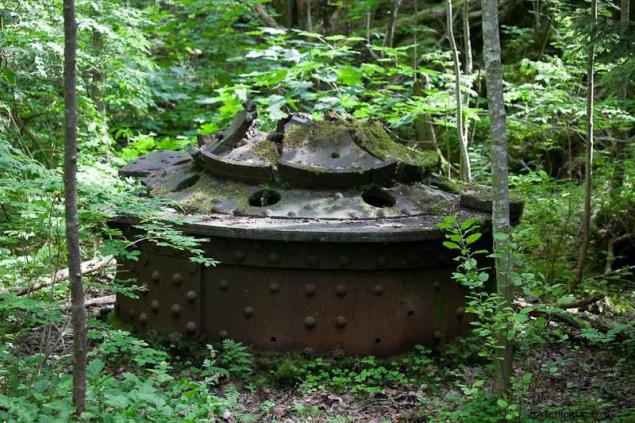
Until the mid-1980s, the territory of the closed mode. The entrance was only a pass. This was due to the fact that in the area of the fort was part of the military, frontier, and to a greater extent because the area of the former Fort Ino in the post-war years there was a testing ground of high security. According to the stories of old residents, serves this complex underground structures, there were carried out experiments to determine the effect of hard radiation on animals. Then landfill eliminated, but access to the fort was closed. By the end of XX century fort Ino held the military unit and the Central Research Institute of the Russian Defense Ministry
--img34--
To date remains a risk of explosion under the rubble remaining shells. All overgrown with forest. Metal as possible removed. Well-preserved huge ditches strong points number 1 and 2, at the reference number of items 7 and 8 can be seen clearly designated glasisoobrazny profile positions. Preserved staircase former dacha Kuropatkin AN, remodeled during the First World War under the temporary hospital. The staircase leads to the bay. Clean sand, huge boulders on the horizon a chain of tankers waiting in the pilot oil port.
--img35--
By the way, there is a legend.
... In the spring of 1918 at Fort Ino arrived train with a valuable cargo. A thousand boxes of gold, a few bags and bags with jewelry. Here in the underground dungeons of the fortress, the Bolsheviks were going to pass the treasure to representatives of Germany. That was the fee for Russia's withdrawal from the First World War. But subsequent events have dramatically changed the course of history. In an instant, it turned out to be the fort destroyed and abandoned. A gold, seems to have remained somewhere under the ruins of the gun batteries. And perhaps there is still ...
PS. by Dams (if you go from the village. Horska just outside the container terminal Moby-Dick) have berths. Are small boats 12-15 people. Arrange tours of the forts (forts themselves on not planted, but the approach is fairly close + story). I have been there 2 years ago and the cost of 1 hour "skating" was about 6 tr the entire company.
--img36--
Source:
also I do not stay in debt.
The attention of many texts and pictures !!! Forts of St. Petersburg - a set of long-term fortifications, erected at different times in order to protect the capital of the state from attack by sea. In the years of its existence, they were a monument of fortification art of world importance. In terms of military history, and world history as a whole range of considered fortifications unique in that it is the still lingering objects can track the progress of all accelerating competition between the means of attack from the sea and the protection of it, between the development of fortification and progress in the establishment of artillery systems both for the purpose of defense, or overcoming it. This competition lasted for over two hundred years, during which the defense of St. Petersburg has never been broken.
Immediately after the founding of St. Petersburg for the protection being built there a fortress on the banks of Vasilyevsky Island was installed an artillery battery at the beginning of the XX century defensive capabilities fortress fell markedly and for the protection of the capital close to the exit of the Gulf of Finland in the narrowest part (width of 21 km) was set up a unique mine-artillery positions, based on the land forts on the southern and northern shores and its banks are mine. That to secure these forts were built special railway lines.
Let's start

Fort "Kronshlot»
Built in 1703-1704, the years 1715-1724
What is interesting: It is assumed that he has made drawings of Peter Voronezh model

Fort "Emperor Peter I» («Citadel»)
Built in 1721-1724 years

Fort "Emperor Paul I» («Risbank»)
Built in the years 1807-1812, rebuilt in the years 1845-1859
What's interesting: In the years of its existence, it was the largest and most impressive sea fort is the key to the Big Kronstadt raid
At the end of the XIX century and later, the fort was used to store naval mines and torpedoes.

Fort "Emperor Alexander I» («The Plague»)
Built in 1836-1845 years
What's interesting: In 1898, on the basis of the Imperial Institute of Experimental Medicine was established "Special Committee for the prevention of entry of plague infection and to combat it in the event of Her appearance in Russia" (KOMOCHUM). At the end of the XIX century. Russia's outbreak of bubonic plague. Lone fort was the most suitable place to host special laboratory (station) for the production of vaccines using the horse as a working material. The fort was equipped with steam heating stables, an elevator to lift the animals and for their cremation oven. July 27, 1899 the solemn consecration of the station.
After that, the fort lodged several doctors, among whom were DK Zabolotny, MG Tartakovsky and others. During operation, the head of special laboratory VI Turchinov-Vilkevich (Vyzhnikevich?) And Dr. M. F. Schreiber infected and their bodies after death have also been burned in the incinerator. After that, even on the Elimination of laboratories for the fort remains unofficial title "The Plague fort."

Fort "Schanz»
Built in the 1700s, 1788 - reconstruction, rebuilt in 1855-1856, 1863, 1898-1913

2 Battery "Prince Menshikov»
Built 1841- 1850 years
What's interesting: the battery was on the orders of the Emperor's favorite, is named after Peter.

Fort "Constantine" (Dual southern Battery)
Built in the years 1868-1879, rebuilt in the years 1897-1901
What is interesting: During the lifetime of the fort played a role test site, which is being tested artillery equipment and new methods of fortification

Fort 1 (South Battery 1)
Built in the years 1855-1856, rebuilt in the years 1865-1868

Fort 2 (South Battery 2 - "Dzichkanets»)
Built in the years 1855-1856, rebuilt in the years 1869-1873

Fort 3 ("Count Milutin", "The tower»)
Built in the years 1855-1856, rebuilt in the years 1869-1879
What is interesting: On the fort, the first time in Russian fortification, guns were installed in the towers, although very imperfect by design.
It was at this time there is a transition from a smoothbore artillery rifled artillery, which greatly increased the range and led to a change of tactics battle.

North Fort 1 (North 1 battery)
Built in the years 1855-1856, rebuilt in the years 1861-1869
What's interesting: Until 2002, the fort was used as a warehouse for ammunition and then abandoned.

North Fort 2 (North 2 battery)
Built in the years 1855-1856, rebuilt in the years 1862-1867
What's interesting: While the fort is in a relatively preserved.

North Fort 3 (North Battery 3)
Built in the years 1855-1856, rebuilt in the years 1862-1867
What is interesting: During the construction of the dam was filled up with sand and used for its deposit. When a sample of sand bulldozed everything that remained was destroyed. Now through the former fort goes the road to Kronstadt.

North Fort 4 "The Beast" (North battery 4 "beast»)
Built in 1864-1869 years
What is interesting: It was the most interesting from an architectural point of view of the fort.
floors began to be covered with a solution of natural asphalt. It was the first successful use of this material in Russia, then began asphalting the streets of the capital
In 1970, its premises were used as a cesspool for waste oil and other petroleum products from ships coming to repair. For this reason and the lack of protection he repeatedly burned for several days

North Fort 5 (Northern Battery 5)
Built in the years 1855-1856, rebuilt in the years 1864-1869
What is interesting here in the 80s vocational students number 61 was an attempt to restore, but because of the lack of interest of the state, the initiative quickly stalled

North Fort 6 (Northern Battery 6)
Built in the years 1855-1856, rebuilt in the years 1864-1869
What's interesting: Since 1962 and still at the fort are the service of the military department (now the Gidropribor), which excluding the former historical value of its buildings are built up from silica brick, completely distorting the architectural appearance of the buildings the middle of the XIX century.

North Fort 7 (North battery 7)
Built in the years 1855-1856, rebuilt in the years 1857-1866
What is interesting: It - the only one of all sea forts, which became available on dry land thanks to its proximity to the dam. It is currently used as a wild uncomfortable beach, attracting car owners the relative purity of water. The remaining space is used as a makeshift public toilet. In 2009, given to private ownership. In 2011, at the fort has a bar, restaurant, car and motorcycle parking, the beach, parking for yachts. Admission is free for walking, car owners pay for parking. Externally, there are practically no facilities. Almost everything harvested by modern materials, or destroyed.

Fort "Totleben" ("Pervomaysk»)
Built in 1896-1913 years

Fort "Obruchev" ("Red Army»)
Built in 1896-1913 years

Fort "Reef" (former Alexander battery)
Built in 1898-1912 years
What is interesting: Here was built experimental towering dungeon for 57-mm guns of serfdom, which is raised and lowered by means of a system of levers under the action of recoil when firing ...
Now the fort - indoor facility in which, taking advantage of the lack of control on the part of the protection of cultural heritage is conducted renovation.

further braked slightly
Since These are the most interesting forts
Fort «Krasnaya Gorka»

Named for the village of Krasnaya Gorka (now - Krasnaya Gorka), next to which is.
Fort came into operation in early 1914. By the beginning of World War II, the fort was manned by a garrison of wartime (2000 artillery, infantry and 2000, more than 500 soldiers of other arms). In the fighting of World War fort did not participate
By January 1917, the garrison of the fort grew to 5,500 people. In 1918, due to the proximity of the German army fort was mined. The explosion had been canceled, but the charges were not removed. August 19 during a severe thunderstorm detonated several charges. Blown up the powder magazine three shells Kane and four 254-mm guns. Artillery servant died, the guns were heavily damaged, and one 254-mm gun destroyed.

October 30, 1919 entered into a fort artillery duel with the English monitor "Erebus" (eng. HMS Erebus), which fulfilled the timid and belated fire support to the British fleet Yudenich army offensive.
In 1921, the guns "Red Hill" fired on Kronstadt, suppressing anti-Bolshevik uprising
During the Great Patriotic War, the fort was the center of defense Oranienbaum bridgehead. The range of his guns actually determines the location of the range of the German positions. Around the fort were laid railroad tracks, which on special transporters move large caliber naval guns (356-, 305-, 180-mm).

After the war, the fort for some time maintained combat ready, then its premises were used as a warehouse, and then almost completely abandoned.
In 2007, together with the municipal authorities Lebiazhie, Lomonosov district of the Leningrad region and the Navy decided in the near future to create a museum on the site of the legendary fort.

In 2007, together with the municipal authorities Lebiazhie, Lomonosov district of the Leningrad region and the Navy decided in the near future to create a museum on the site of the legendary fort.

Fort «Eno»

In 1909, the General Staff approved a plan under which 60 km west of St. Petersburg at the site of narrowing the Gulf - the Strait Stirsudden - create advanced mine-artillery positions. It became the core of two new coastal fort, each of which was able to successfully conduct an artillery duel with the battle fleet and prevent minesweeping.
The territory allotted fort housed a summer residence, it was Finland. Volunteer in your garden treasury transferred only Miliukov A. and artists Mate Vladimir Serov VA The first two were equipped under the premises of builders and Serov villa was demolished during the construction of the railroad to the fort.

The fort had two coastal batteries of four 152 mm cannon Kane (flanks), a battery of eight 254-mm guns and a battery of eight 279 mm howitzers, who shot 15-18 km. Around the guns was a whole underground town, covered with a two-meter layer of concrete, designed for getting large-caliber artillery shells ship. There have been snarjadnye cellar, barracks, the railway to deliver shells to the guns, command and observation posts. The positions were covered by a 3-meter concrete breastworks. The fort was surrounded by a small shaft with concrete reference points and adapted for all-round defense

In January-February 1918, when only began to form a workers 'and peasants' Red Army detachment of Red Guards Sestroretsk (hundred A. Panshin) with SP carried a wax guard to protect the fort Ino in Finland. The old army randomly demobilized, leaving the fort to fend for themselves. A group of Sestroretsk found the fort almost empty. Only a small part of the revolutionary sailors detained rout demoralized soldiers.

April 24 Finnish troops laid siege to the fort Ino. Pursuing the Finnish Red Guard, retreating to the Soviet border, Finns and Germans surrounded him and offered to start talks for an immediate surrender. But the besieged with strong arms, a large amount of ammunition and food, refused to surrender without orders from the Soviet government.
The officer of the royal army commandant of the fortress was trying to prove that the protection of the fort a detachment of 200 Red Army - a fool's errand. But it is not supported, except for the 6 alarmist. Worse was the case when the April evening, taking with him a plan for the fort commander ran to the Finns.

04.24.1918 years in the preparation of delivery fort locks with guns were removed and taken to Kronstadt, prepared for the explosion of the battery. Moscow fears that the protection of the fort can lead to rupture of the Brest peace.
05.05.1918, Germany required to pass the fort of Finland.
Squad held the defense so far from Kronstadt to the aid do not try an icebreaker and a warship with a government commission, offer to blow the fort in order not to leave the heavily fortified military base the enemy.

In the second half of May, the last days of the fort Ino. When the group left its shores, bright flames devoured the wooden buildings, kitchens, barracks. Being far from the coast the Red Army had heard several explosions. The fortifications of the fort got no enemies.

Until the mid-1980s, the territory of the closed mode. The entrance was only a pass. This was due to the fact that in the area of the fort was part of the military, frontier, and to a greater extent because the area of the former Fort Ino in the post-war years there was a testing ground of high security. According to the stories of old residents, serves this complex underground structures, there were carried out experiments to determine the effect of hard radiation on animals. Then landfill eliminated, but access to the fort was closed. By the end of XX century fort Ino held the military unit and the Central Research Institute of the Russian Defense Ministry
--img34--
To date remains a risk of explosion under the rubble remaining shells. All overgrown with forest. Metal as possible removed. Well-preserved huge ditches strong points number 1 and 2, at the reference number of items 7 and 8 can be seen clearly designated glasisoobrazny profile positions. Preserved staircase former dacha Kuropatkin AN, remodeled during the First World War under the temporary hospital. The staircase leads to the bay. Clean sand, huge boulders on the horizon a chain of tankers waiting in the pilot oil port.
--img35--
By the way, there is a legend.
... In the spring of 1918 at Fort Ino arrived train with a valuable cargo. A thousand boxes of gold, a few bags and bags with jewelry. Here in the underground dungeons of the fortress, the Bolsheviks were going to pass the treasure to representatives of Germany. That was the fee for Russia's withdrawal from the First World War. But subsequent events have dramatically changed the course of history. In an instant, it turned out to be the fort destroyed and abandoned. A gold, seems to have remained somewhere under the ruins of the gun batteries. And perhaps there is still ...
PS. by Dams (if you go from the village. Horska just outside the container terminal Moby-Dick) have berths. Are small boats 12-15 people. Arrange tours of the forts (forts themselves on not planted, but the approach is fairly close + story). I have been there 2 years ago and the cost of 1 hour "skating" was about 6 tr the entire company.
--img36--
Source:


